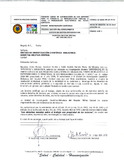Mostrar el registro sencillo del ítem
Diferencias en el curso clínico de los pacientes con linfoma de células del manto en relación a la expresión única o simultánea de los marcadores Ciclina-D1 y SOX11.
| dc.contributor.advisor | Vazquez Vizcaino, Yadira Astrid | spa |
| dc.contributor.author | González Salebe, Victor Manuel | |
| dc.contributor.author | Barreto Plaza, Julián Andres | |
| dc.coverage.spatial | Medicina | spa |
| dc.date.accessioned | 2019-04-24T14:47:56Z | |
| dc.date.accessioned | 2019-12-30T19:07:00Z | |
| dc.date.available | 2019-04-24T14:47:56Z | |
| dc.date.available | 2019-12-30T19:07:00Z | |
| dc.date.issued | 2019-03-26 | |
| dc.identifier.uri | http://hdl.handle.net/10654/21127 | |
| dc.description.abstract | El linfoma de células del manto (LCM) es una neoplasia linfoproliferativa originada en células B maduras, su diagnóstico requiere la integración de una morfología típica y variantes, junto con características inmunofenotípicas evaluadas por medio de marcadores de inmunohistoquímica como CD5, Ciclina D1 y SOX11. Los marcadores Ciclina D1 y SOX11 son utilizados para el diagnóstico preciso de esta neoplasia, pero el impacto en el pronóstico entre los casos con expresión de ambos marcadores frente a los que solo expresan uno de ellos, no está ampliamente definido en la literatura. Teniendo en cuenta lo anterior determinamos si existe una diferencia significativa entre el curso clínico de los pacientes dependiendo de la expresión de estos marcadores. Se realizaron estudios de inmunohistoquímica analizados por patólogos con experiencia en hematopatologia, sobre pacientes atendidos en el Hospital Militar Central durante los años 2014 al 2018 y se correlacionaron los hallazgos con variables documentadas en historia clínica. El modelo del estudio fue de cohorte retrospectivo, documentando mediante un censo de los LCM un total de 22 casos, de los cuales 15 (66.00%) mostraron expresión simultánea tanto para Ciclina D1 como SOX-11. En esta población se realizó una prueba exacta de Fisher la cual demostró una asociación significativa con los grupos de presentación extranodal y variante morfológica blastoide relacionados con un curso clínico más agresivo. Concluimos con los resultados expuestos que se debe realizar en todos los casos de LCM, ambos marcadores de inmunohistoquímica con el fin de determinar la agresividad y probable curso clínico. | spa |
| dc.description.sponsorship | N/A | spa |
| dc.description.tableofcontents | 1. RESUMEN 7 2. INTRODUCCIÓN 8 3. PROBLEMA DE INVESTIGACIÓN 9 4. PREGUNTA DE INVESTIGACIÓN 10 5. JUSTIFICACIÓN 11 6. MARCO TEÓRICO 12 7. OBJETIVOS 19 7.1 General 19 7.2 Específico 19 8. HIPÓTESIS 20 9. METODOLOGÍA 21 9.1Tipo y diseño general del estudio 21 9.2 Población y muestra 21 9.3 Selección y tamaño de muestra 21 9.4 Criterios de inclusión y exclusión 22 10. RESUMEN 23 10.1 Métodos y modelos de análisis de los datos según tipo de variables 23 10.2 Gráfico de variables 23 10.3 Manual de variables 24 10.4 Técnicas y procedimientos para recolectar la información 25 10.5 Programas a utilizar para análisis de datos 26 10.6 Manejo de variables 26 10.7 Estrategia de comunicación 26 11. CRONOGRAMA 27 12. PRESUPUESTO 28 13. ASPECTOS ÉTICOS 29 14. RESULTADOS 30 15. DISCUSIÓN 38 16. CONCLUSIONES 41 17. RECOMENDACIONES 42 18. AGRADECIMIENTOS Y CONFLICTOS DE INTERES 43 19. REFERENCIAS BIBLIOGRÁFICAS 44 | spa |
| dc.format | spa | |
| dc.format.mimetype | application/pdf | spa |
| dc.language.iso | spa | spa |
| dc.language.iso | spa | spa |
| dc.publisher | Universidad Militar Nueva Granada | spa |
| dc.rights.uri | https://creativecommons.org/licenses/by-nc-nd/2.5/co/ | spa |
| dc.title | Diferencias en el curso clínico de los pacientes con linfoma de células del manto en relación a la expresión única o simultánea de los marcadores Ciclina-D1 y SOX11. | spa |
| dc.type | info:eu-repo/semantics/bachelorThesis | spa |
| dc.rights.accessrights | info:eu-repo/semantics/openAccess | spa |
| dc.publisher.department | Facultad de Medicina | spa |
| dc.type.local | Trabajo de grado | spa |
| dc.description.abstractenglish | Mantle cell lymphoma (MCL) is a lymphoproliferative neoplasm originated in mature B cells, its diagnosis requires the typical morphology and variants, together with the immunophenotypic characteristics evaluated by using markers of immunohistochemistry such as CD5, Cyclin D1 and SOX11. The cyclin D1 and SOX11 markers are used for the accurate diagnosis of this neoplasm, but the impact on the prognosis in these cases is not widely described in the literature.Taking into account the above, we determine if there is a significant difference between the clinical course of the patients and the expression of these markers. Immunohistochemistry studies were performed and analyzed by pathologists with experience in hematopathology in patients treated at the Hospital Militar Central between 2014 and 2018, and the findings were correlated with variables documented in the clinical history. The study model was a retrospective cohort, documenting by census of MCL a total of 22 cases, of which 15 (66.00%) showed simultaneous expression for Cyclin D1 as SOX-11. In this population an exact Fisher's test was performed, which showed a significant association with extranodal presentation and blastoid variant morphology, that are features related to a more aggressive clinical course. With these results we conclude that both of these immunohistochemical studies should be performed in all cases of MCL in order to determine the aggressiveness and probable clinical course. | eng |
| dc.title.translated | Differences in the clinical course of patients with mantle cell lymphoma in relationship with the single or simultaneous expression of Cyclin D1 and SOX-11. | spa |
| dc.subject.keywords | Mantle cell lymphoma, SOX-11, Cyclin-D1, Prognosis. | spa |
| dc.publisher.program | Patología | spa |
| dc.creator.degreename | Especialista en Patología | spa |
| dc.subject.decs | LINFOMA | |
| dc.subject.decs | NEOPLASMAS | |
| dc.subject.decs | PRONOSTICO MEDICO | |
| dc.subject.decs | GANGLIOS LINFATICOS | |
| dc.contributor.corporatename | N/A | spa |
| dc.description.degreelevel | Especialización | spa |
| dc.publisher.faculty | Medicina y Ciencias de la Salud - Patología | spa |
| dc.type.dcmi-type-vocabulary | Text | spa |
| dc.type.version | info:eu-repo/semantics/acceptedVersion | spa |
| dc.rights.creativecommons | Atribución-NoComercial-SinDerivadas | spa |
| dc.relation.references | 1. Swerdlow SH, et al. The 2016 revision of the World Health Organization classification of lymphoid neoplasms. Blood. 2016;127:2375-2390. | spa |
| dc.relation.references | 2. Elias Campo and Simon Rule, Mantle cell lymphoma: evolving management strategies, Blood. 2015, VOLUME 12. | spa |
| dc.relation.references | 3. Karin E. Smedby, Henrik Hjalgrim; Epidemiology and etiology of mantle cell lymphoma and other non-Hodgkin lymphoma subtypes. Seminars in Cancer Biology 21 (2011) 293–298. | spa |
| dc.relation.references | 4. Andersen NS, Jensen MK, de Nully Brown P, Geisler CH. A Danish population-based analysis of 105 mantle cell lymphoma patients: incidences, clinical features, response, survival and prognostic factors. Eur J Cancer. 2002;38:401-408. | spa |
| dc.relation.references | 5. Caballero D, Campo E, Lopez-Guillermo A, et al. Clinical practice guidelines for diagnosis, treatment, and follow-up of patients with mantle cell lymphoma. Recommendations from the GEL/TAMO Spanish Cooperative Group. Ann Hematol. 2013;92(9):1151–1179. | spa |
| dc.relation.references | 6. Julie M. Vose, Mantle cell lymphoma: 2017 update on diagnosis, risk-stratification, and clinical management, Am J Hematol. 2017;92:806–813. | spa |
| dc.relation.references | 7. Elias Campo and Pedro Jares, Mantle Cell Lymphoma, Hematopathology, Second Edition, capitulo 22, Copyright © 2017 by Elsevier. | spa |
| dc.relation.references | 8. Mozos A, Royo C, Hartmann E, et al. SOX11 expression is highly specific for mantle cell lymphoma and identi- fies the cyclin D1 negative subtype. Haematologica. 2009;94:1555-1562. | spa |
| dc.relation.references | 9. Dictor M, Ek S, Sundberg M, et al. Strong lymphoid nuclear expression of SOX11 transcription factor defines lymphoblastic neoplasms, mantle cell lymphoma and Burkitt’s lymphoma. Haematologica. 2009;94:1563- 1568. | spa |
| dc.relation.references | 10. Vegliante MC, Palomero J, Perez-Galan P, et al. SOX11 regulates PAX5 expression and blocks terminal B-cell differentiation in aggressive mantle cell lymphoma. Blood. 2013;121(12):2175-2185. | spa |
| dc.relation.references | 11. Jares P, Colomer D, Campo E. Molecular pathogenesis of mantle cell lymphoma. J Clin Invest 2012;122:3416-23. | spa |
| dc.relation.references | 12. Gesk S, Klapper W, Martín-Subero JI, et al. A chromosomal translocation in cyclin D1-negative/cyclin D2-positive mantle cell lymphoma fuses the CCND2 gene to the IGK locus. Blood 2006; 108: 1109-10. | spa |
| dc.relation.references | 13. ZengW,FuK,Quintanilla-FendL,LimM,OndrejkaS,HsiED.CyclinD1-negative blastoid mantle cell lymphoma identified by SOX11 expression. Am J Surg Pathol 2012;36:214–9. | spa |
| dc.relation.references | 14. Ting-Xun Lu, Jian-Yong Li, The role of SOX11 in mantle cell lymphoma, Leukemia Research 37 (2013) 1412–1419. | spa |
| dc.relation.references | Patricia Balsas et al. SOX11 promotes tumor protective microenvironment interactions through CXCR4 and FAK regulation in mantle cell lymphoma; Blood. 2017;130(4):501-513 | spa |
| dc.relation.references | 16. Lina Nygren et al. Prognostic role of SOX11 in a population-based cohort of mantle cell lymphoma; Blood. 2012 VOLUME 119, NUMBER 18. | spa |
| dc.relation.references | 17. Hoster E, Dreyling M, Klapper W, Gisselbrecht C, van Hoof A, Kluin-Nelemans HC, et al. A new prognostic index (MIPI) for patients with advanced-stage mantle cell lymphoma. Blood. 2008; 111:558–65. | spa |
| dc.relation.references | 18. Venera Kuci, Lena Nordström; Emerging role of SOX11 in mantle cell lymphoma, Blood and Lymphatic Cancer: Targets and Therapy 2015:5 35–42. | spa |
| dc.relation.references | 19. Roshni Narurkar, Mohammad Alkayem and Delong Liu, SOX11 is a biomarker for cyclin D1- negative mantle cell lymphoma; Narurkar et al. Biomarker Research (2016) 4:6 | spa |
| dc.relation.references | 20. Wang X, Asplund AC, Porwit A, et al. The subcellular Sox11 distribution pattern identifies subsets of mantle cell lymphoma: correlation to overall survival. Br J Haematol. 2008;143(2):248-252. | spa |
| dc.subject.proposal | LINFOMA DE CELULAS DEL MANTO | spa |
| dc.subject.proposal | GEN SOX11 | spa |
| dc.subject.proposal | PROTEINA CICLINA D1 | spa |
| dc.description.abstractother | N/A |
Archivos en el ítem
Este ítem aparece en la(s) siguiente(s) colección(ones)
-
Patología [9]





